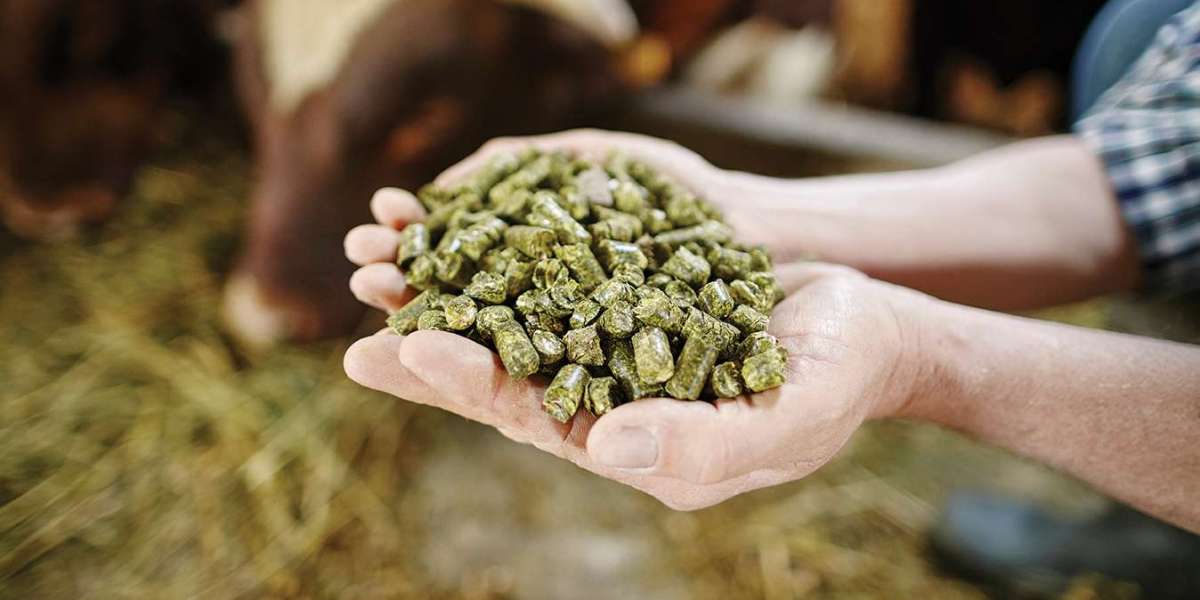Introduction: Transitioning Toward Antibiotic-Free Livestock Production
The Animal Feed Additives Market is undergoing rapid evolution with the growing global movement toward antibiotic-free livestock production. Increasing concerns about antimicrobial resistance, regulatory restrictions on antibiotic growth promoters, and consumer demand for safer animal products are driving producers to explore natural alternatives like probiotics and phytogenic additives.
These innovative feed additives are gaining traction for their ability to enhance gut health, boost immunity, and improve growth performance without the drawbacks associated with antibiotics, making them integral to sustainable and responsible animal husbandry.
The Growing Need for Antibiotic Alternatives in Animal Nutrition
Antibiotics have traditionally played a dual role in livestock farming — treating infections and promoting growth. However, the overuse of antibiotics has raised public health concerns related to antibiotic resistance, leading to stringent regulations across various regions including the European Union, North America, and parts of Asia.
Consequently, the livestock industry is prioritizing antibiotic-free production models that rely on feed additives capable of maintaining animal health and productivity. This shift opens vast opportunities for probiotic and phytogenic additives as effective natural alternatives.
Probiotic Additives: Enhancing Gut Health and Immunity
Probiotics are live microorganisms that, when administered in adequate amounts, confer health benefits to the host by balancing intestinal microbiota.
Benefits in Livestock Production
Improved Digestive Efficiency: Probiotics help break down feed components, enhancing nutrient absorption.
Enhanced Immune Response: By stimulating gut-associated lymphoid tissue, probiotics improve disease resistance.
Pathogen Suppression: Competitive exclusion of harmful bacteria reduces infection risks.
Stress Mitigation: Probiotics alleviate digestive disturbances during stress conditions like weaning or transport.
These attributes make probiotics vital in maintaining animal health without relying on antibiotics, thus supporting growth and feed efficiency.
Phytogenic Additives: Natural Plant-Derived Solutions
Phytogenic additives include herbs, spices, essential oils, and plant extracts rich in bioactive compounds such as flavonoids, tannins, and terpenoids. Their antimicrobial, antioxidant, and anti-inflammatory properties contribute to healthier livestock.
Key Advantages
Antimicrobial Effects: Phytogenics inhibit pathogenic bacteria growth in the gastrointestinal tract.
Improved Feed Palatability: Natural flavors enhance feed intake and digestion.
Antioxidant Protection: Reducing oxidative stress improves overall animal wellbeing.
Growth Promotion: Stimulating digestive secretions supports nutrient utilization and growth.
The integration of phytogenic additives into feed formulations is increasingly preferred due to their natural origin and multifunctional benefits.
Market Trends Supporting Probiotic and Phytogenic Adoption
Regulatory Frameworks and Consumer Preferences
Strict bans and restrictions on antibiotic growth promoters globally have created a regulatory push for antibiotic alternatives. Simultaneously, consumers demand meat, dairy, and eggs free from antibiotic residues, encouraging producers to embrace natural feed additives.
Growing Scientific Validation
Research continues to validate the efficacy of probiotics and phytogenics in improving animal health, boosting production parameters, and mitigating disease risks, increasing confidence in their widespread use.
Diverse Applications Across Species
Both additives find application in poultry, swine, ruminants, and aquaculture, addressing species-specific health challenges and nutritional needs.
Regional Dynamics Influencing Market Growth
Europe: Leading with stringent antibiotic bans, Europe drives innovation and adoption of probiotic and phytogenic solutions.
North America: Regulatory reforms and consumer awareness spur demand for natural feed additives.
Asia-Pacific: Rapid growth in intensive farming practices coupled with regulatory tightening promotes adoption.
Latin America & Africa: Emerging awareness and investments in sustainable farming support gradual market penetration.
Challenges and Opportunities in Adoption
Challenges
Variability in Efficacy: Differences in strains, formulations, and dosages affect consistency of probiotic and phytogenic outcomes.
Shelf Life and Stability: Maintaining viability of live probiotics and bioactive compounds during feed processing remains a concern.
Cost Considerations: Higher costs than traditional additives can be a barrier for small-scale producers.
Opportunities
Formulation Innovation: Advances in microencapsulation and delivery systems improve stability and efficacy.
Combination Products: Synergistic blends of probiotics and phytogenics offer enhanced benefits.
Sustainability Focus: Contribution to reduced antibiotic resistance and lower environmental impact aligns with global sustainability goals.
Future Outlook: Integration of Natural Additives in Livestock Production
The momentum behind probiotic and phytogenic additives is expected to accelerate, driven by continuous innovation, growing regulatory support, and expanding market demand for antibiotic-free animal products. Emerging technologies such as precision feeding and microbiome modulation will further optimize their use.
Feed additive manufacturers investing in research and tailored solutions are well-positioned to capitalize on this trend, helping livestock producers improve animal welfare, productivity, and food safety.
Conclusion
The shift toward antibiotic-free livestock production is reshaping the Animal Feed Additives Market, with probiotic and phytogenic additives becoming central to sustainable and responsible animal nutrition strategies. Their natural, multifunctional properties make them indispensable in promoting animal health, enhancing productivity, and meeting regulatory and consumer expectations globally.








